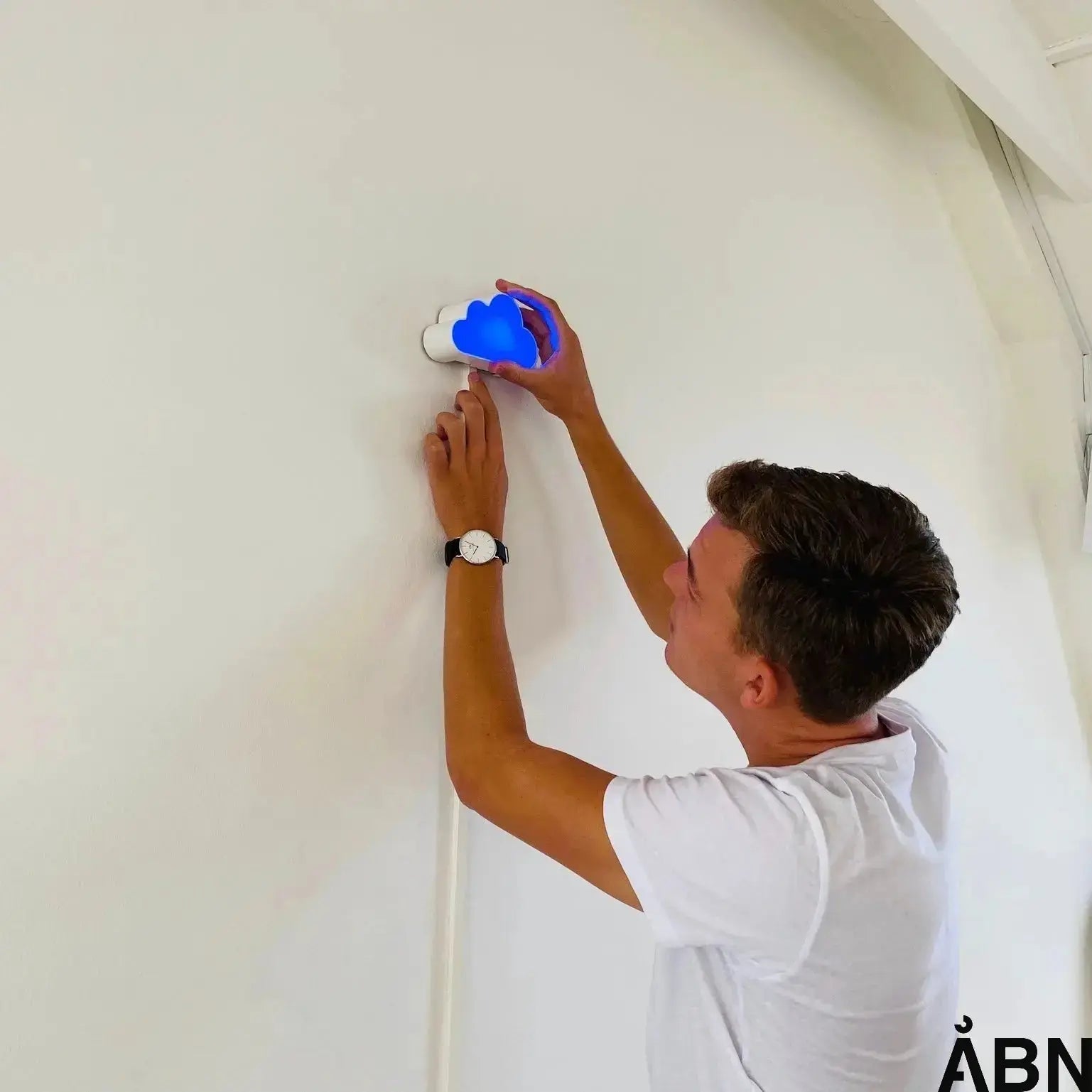These are the symptoms that you have too dry air
You may know the feeling: dry eyes, itchy skin and an annoying cough that won't go away – especially in the winter months. It's not necessarily a cold or allergy that's at play. Often it's the indoor climate, and particularly low humidity, that's the culprit. Dry air is an invisible challenge in many Danish homes, institutions and offices – and it affects both people and buildings more than we think.
In this article, we delve into what dry air really is, what symptoms to look out for, and how it affects both your health and well-being. We also show you how to identify the problem and act on it – and how ÅBN can help you get control of your indoor climate.
What is dry air – and why does it occur?
Dry air occurs when the relative humidity drops below 30%. This often happens in the winter months, when cold outdoor air is heated indoors without adding moisture. The result is dry, dusty and uncomfortable air, which both the body and the building react to. According to Good Working Environment, low humidity is an overlooked problem that can have a major impact on indoor climate and well-being – especially in office environments and institutions.
The most common symptoms of dry air
When the air is too dry, the body reacts quickly. Here are some of the most common symptoms you should be aware of:
Dry skin and chapped lips
Dry air draws moisture from the skin, which can lead to itching, irritation and, in the worst case, cracks. Many people also experience rough and chapped lips – especially in the morning or after a long day indoors.
Irritated mucous membranes
The nose, throat and eyes are particularly vulnerable. When the mucous membranes dry out, it can cause a burning, itching or “sandy-eye” sensation. It can also lead to an increased risk of infections as the mucous membranes lose their natural defenses.
More frequent nosebleeds
Dry mucous membranes in the nose make it more vulnerable to small cracks, which can lead to nosebleeds – especially in children and the elderly. According to TestDinBolig , this is a classic sign of too dry air in the home.
Cough and dry throat
A dry, scratchy throat and a persistent cough without explanation can be signs that you are breathing in air that is too dry. This is especially true in the bedroom, where many people wake up with a “dry mouth” or cough.
Worsened allergies and asthma
People with asthma or allergies may experience worsening symptoms when humidity is low. Dry air irritates the airways and makes them more sensitive to dust and particles in the air.
Other symptoms
Dry air can also lead to:
- Dry and itchy eyes
- Headache
- Fatigue and difficulty concentrating
These symptoms may be diffuse, but if several people in the same room experience them, it is worth investigating the humidity more closely.
How dry air affects your home and building
It's not just people who suffer from dry air – buildings and furnishings are also affected. Here are some typical signs:
Cracks in wooden floors and furniture
Wood is a living material that reacts to humidity. When the air is too dry, the wood shrinks, which can lead to cracks in floors, countertops and furniture.
Peeling paint and wallpaper
Surfaces like walls and ceilings can become brittle and start to peel when moisture levels are too low, leading to expensive repairs and shortening the lifespan of the materials.
Static electricity
Dry air increases the amount of static electricity – you may know the feeling of getting a shock when you touch a doorknob or having your hair stand up in all directions. It is not dangerous, but can be annoying and a sign of an imbalance in the indoor climate.
Why is dry air an overlooked problem?
According to the NFA, dry air is a significantly underestimated cause of poor well-being among office workers. Many people think it's about poor ventilation or noise – and overlook humidity as a significant factor.
This is partly because dry air is invisible. We can't see it – and without the right tools, it's hard to know if the humidity is too low. That's why it's important to measure and visualize the indoor climate in a way that's understandable and actionable.
How do you measure humidity?
Relative humidity is measured in percentage and should ideally be between 40–60%. Below 30% is considered too dry. You can use a hygrometer to measure humidity – or even better: use intelligent sensors that give you a clear picture of the entire indoor climate.
At ÅBN, we have developed Skýen – an intuitive indoor climate sensor that measures humidity, temperature, CO₂ and much more. The data is displayed in an easy-to-understand dashboard, so you can quickly see whether the indoor climate supports health and well-being – for children, employees and yourself.
What can you do about dry air?
If you experience the symptoms of dry air, fortunately there are several things you can do:
- Measure the humidity – the first step is to get data on the table.
- Air out carefully – short-term and effective ventilation can help regulate the moisture balance.
- Avoid overheating – high temperatures dry out the air further.
- Use plants – certain plants can naturally increase humidity.
- Consider technological solutions – intelligent sensors and visualization make it easy to act on the indoor climate.
At ÅBN, we work to make indoor climate as understandable as the weather forecast. Our solutions are developed for schools, offices and institutions – with a focus on health, learning and sustainability. You can read more about our approach to indoor climate behavior and visualization here .
FAQ: Frequently Asked Questions About Dry Air Symptoms
How do I know if the air is too dry?
You can use a hygrometer to measure the relative humidity. Is it below









